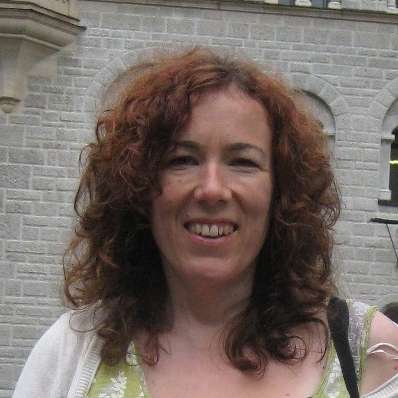Olivier Messiaen’s extraordinary Quatuor pour la fin du temps was written in a German prisoner of war camp, and first performed in the camp by Messiaen and his fellow prisoners on broken instruments. However, there is a danger that the circumstances of the piece’s creation can distract the listener from Messiaen’s own intentions, for he said that it was not written as a reflection on his own captivity, but as a meditation on a passage from Revelations, the last book of the Bible. Messiaen prefaced the score with from Revelations, Chapter 10, in which the end of time is announced by an angel, and signifies the completion of God’s work.
The quartet was preceded this evening by a work written in more congenial surroundings. Helen Papaioannou’s Lachrimae for chamber orchestra developed from a collaboration between Northern Sinfonia and composition students from Newcastle University, on the theme of “old meets new”. The piece is based on John Dowland’s pavane of the same name (also known as Flow my Tears) although Papaioannou’s interpretation was neither flowing nor tearful. Fragments of tune were passed around the parts, interspersed with rhythmic bursts of sound – there was some impressive “Bartók-pizz” from the strings, in which the player pulls the string upwards so that it bounces back off the finger board (and my thanks to cellist Louisa Tuck for explaining this to me). The overall effect was of a once-beautiful vase, smashed into a thousand glittering fragments, leaving interesting remnants with just a few clues of the original structure remaining.
The imaginative use of rhythm in so much modern composition comes in part from Messiaen’s groundbreaking work, in which time seems endlessly malleable. The slower movements of the quartet, with their unresolved harmonies, seemed to stretch time to infinity. The violin solo of the final movement, played by Kyra Humphreys, had a bleak austerity to the tone that suggested the finality of a cold, empty universe – perhaps a rather pessimistic interpretation of a movement that is titled “Praise for the Immortality of Jesus”. As the piece died away, soaring to the heights, Humphreys maintained the tone perfectly on her long notes, played almost at the limit of the violin’s range.
At the centre of the piece is a long solo clarinet movement, “Abyss of the Birds”, played with mesmerising intensity by Jessica Lee. By turns hypnotic and frantic, it demands superhuman breath control, particularly on the long crescendos, which span the whole dynamic range of the instrument. Messiaen’s famous interest in birdsong was evident in this movement, and the opening movement and Lee’s long trills were impressively even and controlled.
The faster movements were surprisingly joyful; again, not the sort of music you might expect to come out of a prison camp. The Intermezzo (Movement IV) was playful, ending with cheeky glissandos and pizzicato, and I really enjoyed the “Dance of Fury for Seven Trumpets” (Movement VI). This movement was entirely in unison, with the musical interest coming from the rhythm and interesting combinations of timbre, climaxing in a wonderfully coordinated crescendo trill.
Although the cello, violin and clarinet all have extended solos, the piano for the most part simply holds things together, with gentle chords, until it bursts out in rippling colour for the appearance of the angel crowned with rainbows in the penultimate movement. Kate Thompson’s accompaniment of Gabriel Waite's expressive cello solo in the fifth movement was full of colour, changing from initial warmth to a hard percussiveness, then back to the gentleness of the opening.
Unfortunately, we were not supplied with any sort of programme notes for the quartet, which was a serious omission: Messiaen gave each movement a very specific title and description and it would have been helpful to have these as a reminder during the performance. Having text in front of us would in no way have distracted from the intensity of the music. In the intimate surroundings of Hall Two at the Sage Gateshead, this was a performance that completely absorbed the audience's attention, and demonstrated the extraordinary power of live music.


